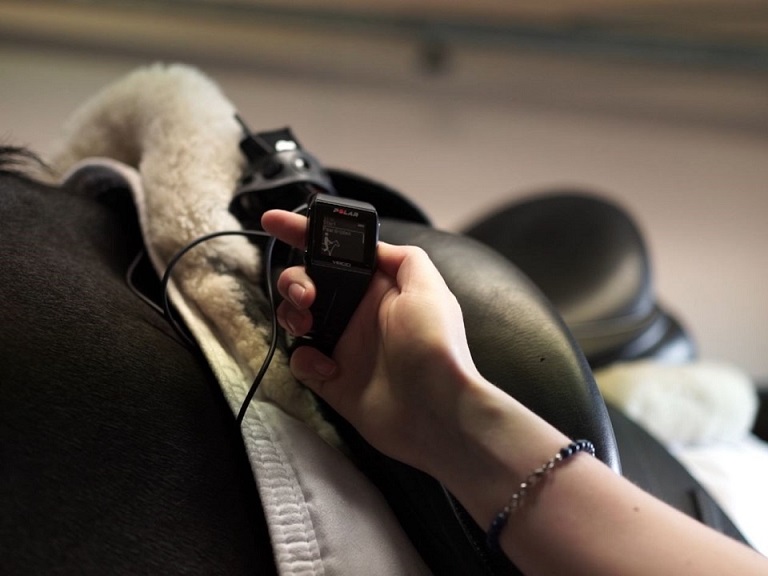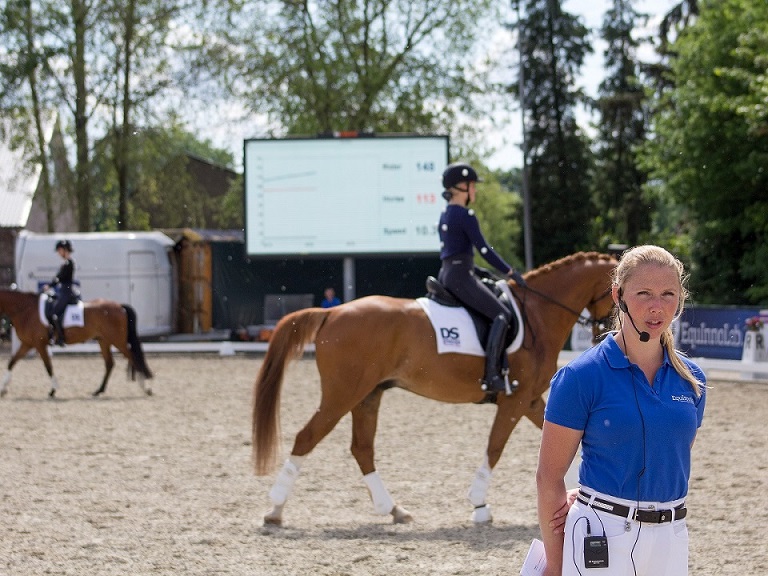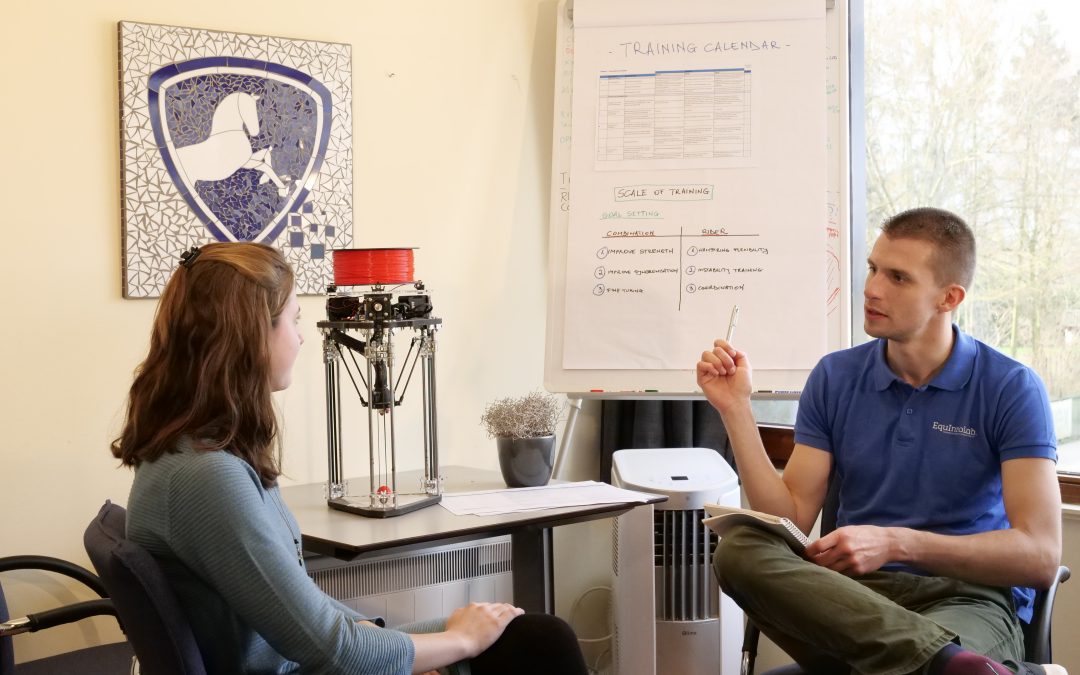We will explain that using a heart rate sensor can very easily give you valuable information to help you train more effectively, and adapt your training on-the-go to your horse's physical state and plan.
Heart rate measurements is one of the data collection methods that are quite well-known in the equestrian sport. Since many years, we know from research that the heart rate is a good indicator of your fitness and mental state. The same applies for the horse. Nowadays, access to a heart rate sensor is easy. Nevertheless, not a lot of riders train with this sensor. Mostly, this has to do with the interpretation of data not being completely clear, and having more trust in our own feeling.
Heart rate in training
When in rest, your horse has a heartbeat of around 20-30 beats per minute. In full speed galloping it can go up to 260 beats per minute. During sports and exercise the demand for blood and oxygen of the muscles of your horse changes leading to a change in heart rate, contraction force, stroke volume and circulation. Stress, internal and external, also has a large impact on your heart rate. An ill horse will have a significantly higher heart rate compared to their healthy state heart rate. External stress coming from transportation and the environment can increase the heart rate of your horse.
Measuring the heart rate in rest and in training gives an insight into the welfare of the horse and the intensity of the training. Only when the progress over time is measured with serial heart rate measurements, you get the most out of the data.
We also know heart rate variability which is used in other sports to adjust your training to. This is the measure to show the changes of intervals between consecutive heartbeats. It shows a shift in the parasympathetic and sympathetic system which controls the heart. The sympathetic system will be activated if the heart rate needs to increase, for example during the training. The parasympathetic system will lower the heart rate when the body is in a state of relaxation. A higher heart rate variability is seen when the horse experiencing stress and when the horse gets fatigued.
Also, we can look at the heart rate recovery. After an exercise the heart rate will gradually drop. In this recovery time the heart rate will drop until it eventually reaches the resting heart rate. The time it takes before the heart rate will drop can give information about the endurance of the horse. A horse with internal or external stress will have a longer recovery time than a physically and mentally healthy horse.
How does our sport use this knowledge?
Other sports, specifically sport where endurance is really important, use heart rate sensors quite a lot. The same applies to the equestrian sports, where the endurance and eventing disciplines use the heart rate sensors as well. There is an easy access to sensors that measure the heart rate of the horse. However, in disciplines like dressage and show jumping it is not an instrument that most riders use in their daily training.
In general, most trainers use their "feeling" to tell if a training is intensive or if the horse is stressed. However, our own feeling has shown not always to be very reliable. A study comparing the heart rate of both the rider and the horse showed an increase in heart rate during exercise for both athletes, but found that only the heart rate of the rider increased (much) further in a show. And this is exactly the moment where most riders mention a stressed horse. The presence of the spectators had more effect on the rider than on the horse, showing that our own feeling is not always a reliable source if the horse is really stressed. Another example is a study in which the horse that was showing no behavioral stress signals had a very high heart rate. Indicating that this horse was experiencing stress. Therefor we cannot always rely solely on our feeling and 'trained' eyes.
A lot of riders are interested in heart rate measurements, but are scared by the use of the sensors, mostly as the benefit is not completely clear yet, and the performance measures are a derivative of the heart rate data.
What does research tell us about training with heart rate data?
During training the heart rate of your horse increases rapidly, but at a submaximal intensity it will reach a steady-state in 2-3 minutes. The rapid increase in heart rate is associated with increased sympathetic activity of the nervous system and the release of adrenaline. The intensity of a training can be characterised by heart rate. A light intensity training will have a heart rate lower than 100 beats per minute, a moderate intensity will have 100 to 124 beats per minute, a higher load is at 124 to 150 beats per minute and a high intensity training will have a heart rate higher than 150 beats per minute.
A proper warmup of the horse is important for the horse. When the warmup is done properly the heart rate will increase gradually. The time to fatigue is depending on the intensity of the training. For example, one study showed trained thoroughbreds could keep working for 24 minutes at a heartbeat of 170 till 180 beats per minute but at a heartbeat of 208 beats per minute horses were fatigued after 4 minutes. The heart rate variability will also increase when the horse gets more fatigue.
The heart rate variability can also be used to see if the horse is experiencing more or less stress. Different studies have found a correlation between the level of stress and an increase in the heart rate variability.
To improve the aerobic capacity of your horse it is good to train at or just below the lactate threshold. The lactate threshold is defined as the point at which lactate begins to accumulate in the blood. At this point the horse will get very fatigue and soreness and even damage of the muscles will occur. This point is reached if the work load is greater than 80% of the maximal heart rate, which is mostly around 170-180 beats per minute. A training above the lactate threshold will have a negative impact on the improvement of the fitness of your horse.
How valid is the research and how reliable are the instruments?
Most of the information about the heart rate in sport comes from racehorses and endurance horses. To measure the heart rate of the horse there are two systems commonly used. An ECG (electrocardiogram) will give reliable information about the heart rate. However the horse needs to be wired to this fixed system. If the heart rate during exercise needs to be measured using an ECG, the horse needs to be on a treadmill. Research done on a treadmill is reliable and easy to repeat. This system has its limitations when it comes to free movement and high speed, and is difficult to use in a real training.
The other system, a commercial heart rate sensor consists out of two or three electrodes incorporated in a belt that can be placed under the saddle. It allows the horse to move freely and it can be used in daily training. This system is a bit more sensitive to the way it is attached and maintained. The skin of the horse where the electrode is attached needs to be very wet for a good signal and the electrodes needs to be proper cleaned afterwards.
Both systems give comparable data about the heart rate during training, but the results about the heart rate variability are not consistent in the two systems. Therefore, the results of the heart rate variability in studies using an ECG are not comparable to the studies using a heart rate meter.
The results of the heart rate variability are not always reliable for predicting stress with horses during training. Results of studies are divergent. The most reliable way to measure the heart rate variability seems to be when the horse is stationary. Therefor it is not a reliable method to predict stress during riding.
What is your take-away?
For measuring the heart rate in our daily training a heart rate sensor placed under the saddle is the easiest to use. First you need to know the condition of your horse at the starting point. This will contains measuring the heart rate in rest, in your daily standard training and competition. Also information about the heart rate during transportation can be valuable. If a horse uses all his energy during the transportation, he will probably be more fatigue during training or competition.
Try to come to an average for rest and training as soon as possible. When there is a good insight in your average heart rates, you can watch the real time heart rate during training. Based on this number, and how far it is from your average heart rate, the intensity of the training can be adjusted. It is possible the intensity needs to be higher, or even lower.
The training intensity needs to be adjusted to your personalized training plan, but also the feeling of your horse. When done consistently, this will help you improve your horse more efficiently. This article explained how heart rate works, but a training plan is always needed to know the right intensity.
At EquInnoLab. we also use a heart rate recovery test, where we look at the physical state of the horse, before providing support in terms of such a personalized training plan. This day-to-day plan then is the perfect benchmark for the right heart rate for your training that day.
What do we want to know more?
Since most of the research is done in high speed or long distance training of the horse, it is also interesting to do more research at the heart rate during the other disciplines of equestrian sports. The welfare of the horses is extremely important, and sometimes questioned by the 'non-horse public' it is good to have a reliable system to show our horses are not stressed during competitions.
Furthermore, the HRV is a good physical and mental state indicator widely used in other sports, that should be incorporated in our sport as well as we want to be able to adapt the training to fit the need of the horse.
The recovery heart race is mostly used in endurance. However research containing the recovery heart rate in horses is very limited. More research could give us more insight in the training program of the horse.
Additionally, we cannot forget about ourselves. While writing this article about heart rate measurements for our team mate (our horse), all fundaments of the training principles came from human sports, being applied to horses. As the other team member, we need to be occupied with our heart rate as well, and with both in parallel. More research is needed for this, as there is little knowledge on the human athlete in our two-athlete team.
Sources
- Hodgson, D.R., McGowan, C.M., McKeever, K. (2013). The Athletic Horse: Principles and Practice of Equine Sports Medicine. Elsevier Health Sciences.
- Lenoir A., Trachsel D.S., Younes, M., Barrey E., Robert C. (2017) Agreement between Electrocardiogram and Heart Rate Meter Is Low for the Measurement of Heart Rate Variability during Exercise in Young Endurance Horses. Frontiers in Veterinary Science. 4:170
- Lewinski von, M., Biau, S., Erber, R., Ille, N., Aurich, J., Faure, J.M., Möstl, E., Aurich, C. (2013) Cortisol release, heart rate and heart rate variability in the horse and its rider: different responses to training and performance. Veterinary Journal. 197(2):229-32
- Mlyneková, Eva & Halo, Marko & Maršálek, Miroslav & Starostová, Lucie. (2016). Impact of training load on the heart rate of horses. Acta phytotechnica et zootechnica. 19. 167-170.
- Munsters., C.C., de Gooijer, J.W., van den Broek, J., van Oldruitenborgh-Oosterbaan, M.M. (2013) Heart rate, heart rate variability and behaviour of horses during air transport. Vet Records. 5;172(1)
- Munsters, C.C., Visser, K.E., van den Broek, J., Sloet van Oldruitenborgh-Oosterbaan, M.M. (2012) The influence of challenging objects and horse-rider matching on heart rate, heart rate variability and behavioural score in riding horses. Veterinary journal. 192(1) :75-80






